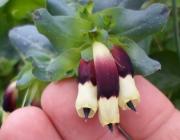Citation:
Abstract:
Acacia karroo is a leguminous tree listed in most of the Algerian territory. It is a salt-tolerant species and a multipurpose tree in agroforestry. However, the defence mechanisms underlying salt tolerance of this species are still unknown. In this study, the effects of salt stress on various morpho-physiological and biochemical traits of A. karroo were investigated. Three-months-old plants were submitted to increasing salt concentrations (0, 200, 400 and 600 mM NaCl), for a period of 21 days. Stem length was not significantly affected by salinity. Increasing salinity reduced the length of root. Number of leaves was maintained constant at 200 and 400 mM NaCl but was reduced slightly at 600 mM NaCl. Also, an increase in crown diameter by 30% under mild and high salt stress was observed. Furthermore, salt tolerance index was not affected at all salinity levels. The leaf mass area was not affected by saline conditions. Salt treatments did not produce a notable change in the relative water content of leaves, indicating a relatively high resistance as well to dehydration, which will certainly contribute to some degree of salt tolerance in A. karroo. Relative water loss from excised leaves was significantly higher at 200 mM and similar at high concentration of NaCl as compared to control. The result of variance analysis for the major effect of salinity showed that salt stress significantly decreased the content of photosynthetic pigment in leaves at higher concentrations of NaCl. However, at 200 mM of NaCl, an enhancement of chlorophyll b, total chlorophylls and carotenoids content was observed. At the same level, chlorophyll a presented a constant content compared with control. In conclusion, although plants suffered from salt stress, as shown by the degradation of photosynthetic, they continued their vegetative growth and maintained their internal water potential under salinity conditions. Therefore, A. karroo is a potential halophytic species to be cultivated in saline lands and make it favourable for agroforestry practices.
